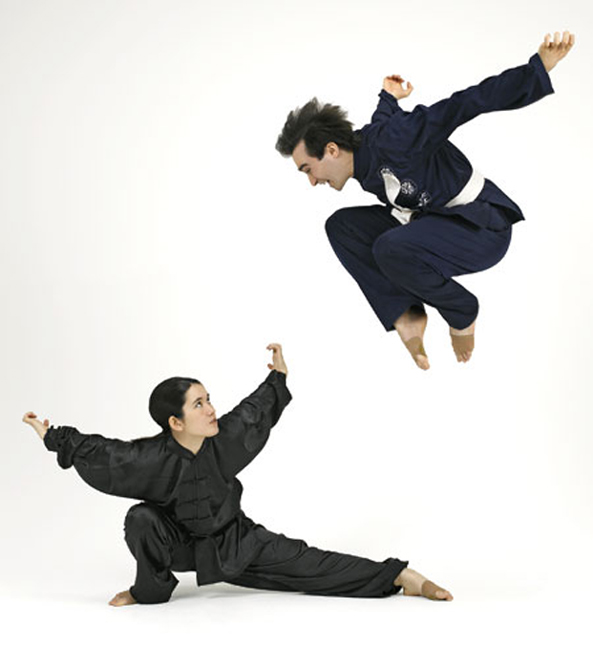CATEGORIES OF KUNGFU

Modernized wushu
Question
I am devoting my life to Gung Fu and am about to begin when I've finished learning Western medicine. My formal study is to be a doctor of Chinese medicine, and Gung Fu is deeply linked with Chinese medicine. I just want to do the best I can in everything I do and help people in general.
-- Philip, Belgium
Answer
Doing the best in everything we do, and helping people in general are two of the values we cherish in our school, Shaolin Wahnam.
As you intend to devote yourself to kungfu, it is only wise to find out what kungfu ideally is. This is one way to ensure that you can have the best result in your kungfu training. Next, you should practice the ideal, or at least the best available you can get.
Due to various reasons, much of kungfu taught in the world today is far from ideal. Ideally, a kungfu practitioner is combat efficient, enjoys good health, has zest for work and play, and is normally calm, peaceful and happy.
For convenience kungfu as it is practiced today may be classified into the following six categories:
- Modernized wushu forms for demonstration. This is the largest group but is mainly focused in China though it is also practiced in many parts of the world. It is highly acrobatic and majestic to watch, but its practitioners do not develop internal force or practice combat application.
- Traditional kungfu forms for demonstration. This is the second largest group, and is mainly found outside China. It is not as acrobatic as wushu, but its performance is also elegant to watch. However, its practitioners do not develop internal force or practice combat application.
- Traditional kungfu or modernized wushu forms in solo practice but use Kick-Boxing or other martial arts for sparring. This is the thrid largest group, and is found both outside as well as in China. Those outside China use traditional kungfu forms, those in China use modernized wushu forms, but both use Kick-Boxing or other martial arts for combat.
- Traditional kungfu forms in solo practice as well as in sparring with emphasis on external force training. In the past this was the category most kungfu practitioners would be in. But today as most kungfu practitioners cannot apply their kungfu for combat, this has become a small group.
- Traditional kungfu forms in solo practice as well as in sparring with emphasis on internal force training. In the past this was the category of advanced practitioners. Only after many years of dedicated training, would students have a chance to learn internal force.
- Traditional kungfu forms in solo practice as well as in sparring, with emphasis on spiritual cultivation. Even in the past this was the elite group. Not many people had the chance to learn this type of kungfu.
Categories 1 and 2 above are, strictly speaking, not kungfu. It is what past masters refered to as “flowery fists and embroidery kicks”, good for demonstration but ineffective for combat.
Category 3 is a modern phenomenon. In my opinion it is not genuine kungfu because its practitioners cannot use kungfu for combat, though they may be good fighters using other martial arts.
Categories 4, 5 and 6 are genuine kungfu. Category 4 is mediocre kungfu, Category 5 is good kungfu, and Category 6 is the best kungfu.
LINKS
